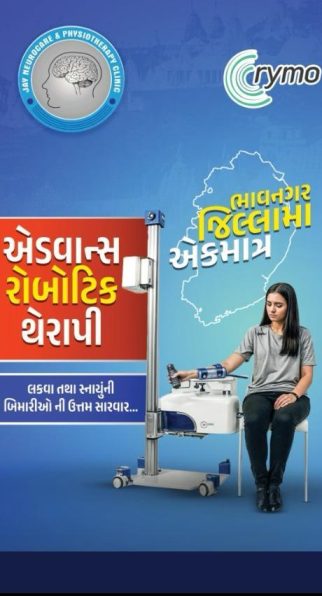
Rymo Robotics
Revolutionizing Physiotherapy with Rymo Robotics
Rymo Robotics
Benefits of Rymo Robotics in Physiotherapy
Robotic therapy ensures precise, controlled, and repetitive movements, essential for neuroplasticity and motor learning.
The device adapts to individual patient needs, offering variable resistance and real-time feedback for optimal recovery.
Interactive elements and real-time progress tracking improve patient compliance and engagement.
Rymo Robotics assists in therapy sessions, reducing the physical strain on physiotherapists while maintaining treatment efficacy.
By promoting active participation and targeted exercises, robotic therapy speeds up recovery timelines.
Rymo Robotics
Conditions Treated with Rymo Robotics
- Stroke Rehabilitation – Helps restore motor functions in hemiplegic patients through guided repetitive movements.
- Spinal Cord Injuries – Assists in regaining functional movements and strength.
- Cerebral Palsy – Enhances coordination and movement control in children and adults with neuromuscular disorders.
- Parkinson’s Disease – Improves movement initiation and reduces rigidity through structured exercises.
- Orthopedic Conditions – Assists in post-surgical rehabilitation, such as fractures and after knee or hip replacements, by facilitating safe and effective mobilization.
Rymo Robotics
Importance of Rymo Robotics in Modern Physiotherapy
The integration of robotics in physiotherapy marks a significant shift in rehabilitation science. Rymo Robotics bridges the gap between traditional therapy and cutting-edge technology, making recovery more structured and efficient. By utilizing artificial intelligence and data-driven analytics, it personalizes treatment plans, ensuring better outcomes.
Rymo Robotics
Conclusion
Rymo Robotics is reshaping the physiotherapy landscape by enhancing treatment precision, improving patient outcomes, and reducing the burden on therapists. As technology continues to evolve, robotic-assisted rehabilitation will play an increasingly vital role in healthcare, empowering patients to regain independence and improve their quality of life.
